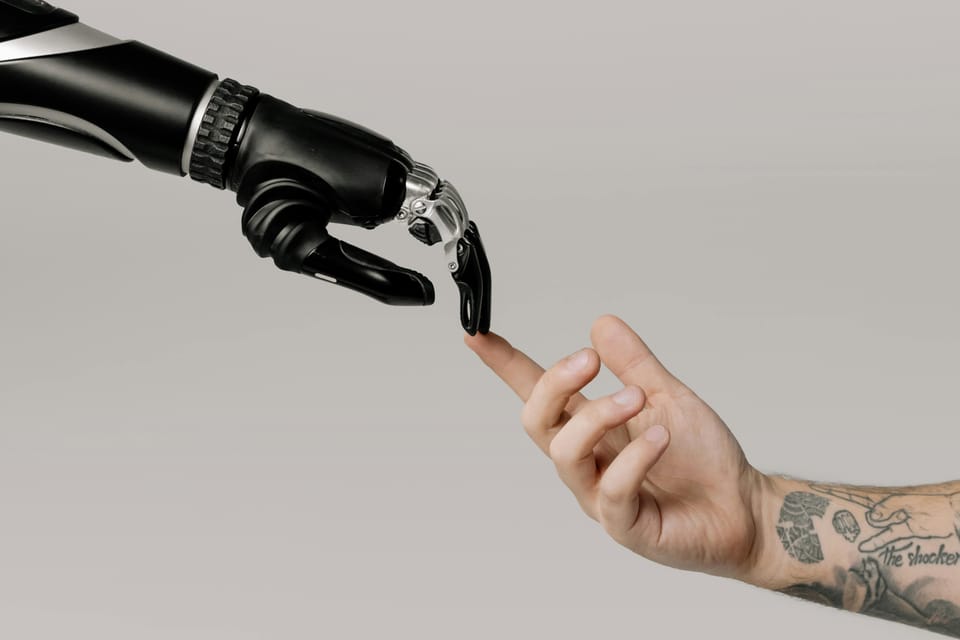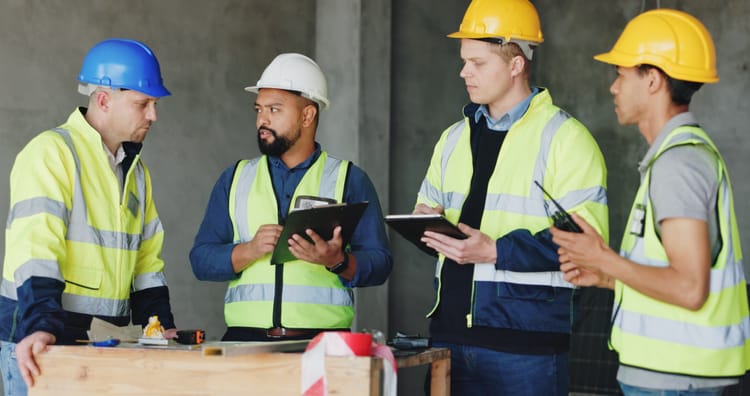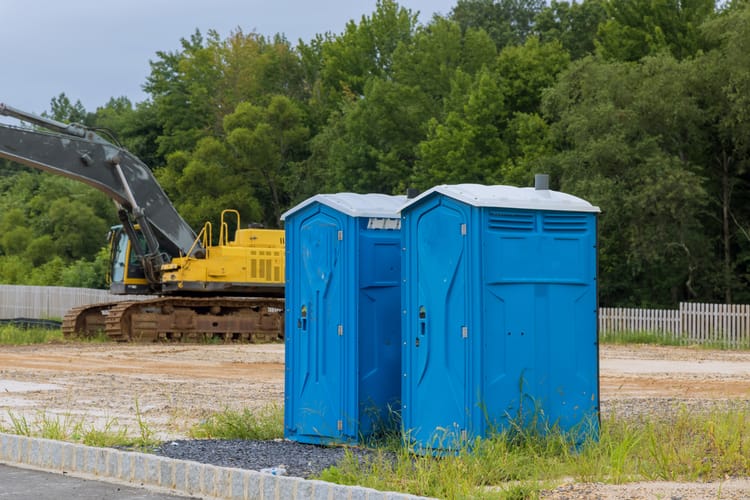🤖 Your next hire might be a robot

The heat is on. Federal policymakers continue to pass legislation that puts pressure on small businesses, including contractors. That’s why this week’s issue includes two experts' advice for safeguarding your mental health and reducing hassles. On top of that, we cover succession planning, emerging opportunities in retrofitting and new building tech and materials. And is your next hire... a robot?

>> You’re doing it wrong! Framing contractor Toshiyuki Yahiro explains how to install studs in the same direction they grew as trees.
>> Throw some shade. A new book outlines the importance of shaded spaces in the built environment.
>> Excavate this. Invest four minutes to watch crews deconstruct a Klamath River dam.
>> What about this instead? If your clients want these paint colors for their bedrooms, help them change their minds.

'The industry very well could be facing a breaking point'
It’s been a stressful few months for our industry, which already had one of the highest suicide rates of any occupation in 2021—well before tariffs, mass deportations, economic uncertainty and the dismantling of healthcare began. Experts like Brandon Anderson, co-chair of the AGC of America Mental Health & Suicide Prevention Task Force, worry that increased stress levels put more construction workers at risk of mental health issues and suicide. The Level sat down with Anderson, who’s also vice president of safety for AGC of Missouri, to discuss the issue and explore some approaches to easing the emotional toll.
—Margot Lester
What’s the most important thing contractors should know right now?My message to everyone is “You are not alone.” Much of the industry—regardless of position or role—has convinced themselves they are alone and no one can possibly understand or know what they are going through. In fact, that is simply not true! Time and time again after a workshop or keynote presentation anywhere in the nation, individuals come up to me, in many cases emotional, to shake my hand or hug me and say, “Thanks for talking about this. We should have been talking about this 30 years ago.” The core of the industry—the people—is ready to talk about this and, more importantly, begin the process of “Building HOPE Through Action.” The acronym HOPE is for Hold On. Pain Ends. I truly believe this and have experienced it. If we can just be present for someone and show a bit of compassion and care, we can do just that.
What makes our industry, specifically, so hard on mental health?
The schedules to get a project done continue to shorten and become tighter than ever. This creates an immense amount of pressure, stress and demand to do more quicker and [more cheaply] in many cases. I am not advocating for longer project times. However, it's unrealistic to think the current time frames are sustainable long-term and that our workforce can handle it. Finding a middle ground is crucial now before the industry is forced to.
Also, access to support. The industry must find a way to meet the needs of the employee where they are—not just another EAP provider or community hike. For example, construction workers work long hours and, in some cases, may have extended travel times to get home or be working out of town away from familiar resources. Employers that provide onsite opportunities at the office and on the job site have seen an increase in utilization of services.
Do you have an example?
Peer support programs are extremely effective and growing across the industry. The Laborers' International Union of North America and the laborers nationally have a great program that is saving lives and meeting members where they are: Laborers Escaping Adversity Now. This simple way of building relationships, trust and good leadership skills—along with communication campaigns to address the stigma and actionable resources for employees—can and do have a positive impact in changing culture.
So supporting good mental health is good business?
The industry very well could be facing a breaking point. Research tells us that we are on track to lose 30% of the workforce in the next six years potentially. With many organizations already feeling the challenge, we simply cannot afford to lose any more, which is why we must take bold steps to improve culture and the work environment to retain and attract new employees. Some studies suggest there is an ROI of 4:1 to 36:1 when it comes to investing in mental health in the industry. Those are returns that impact the bottom line and cannot be ignored as an investment strategy.
If you or someone you know is struggling, the 988 Suicide & Crisis Lifeline offers free, confidential support 24/7. Call or text 988.

Succession is a critical workforce strategy
Succession planning is usually considered a legal matter. But it’s also an important workforce strategy that helps you hold on to valuable talent. Most construction company owners want to maintain some level of individual or family ownership over time, making the most common option tapping a relative or employee to take over leadership.
Even if you don’t plan to step down for several years, launching the planning process now gives you time to identify and develop the next generation. “Building a leadership pipeline is essential,” notes Brad Werner, a partner at Wipfli LLP. “This reinforces the importance of long-term engagement and motivat[es] workers by showing them they’re part of the company’s future. It also helps ensure that institutional knowledge and culture are passed on effectively.”
Why it matters: As much as we don’t like to think about it, unforeseen events can sideline leaders in a flash. Starting to plan now gives you the flexibility to adapt to both expected opportunities and unexpected circumstances that impact company leadership and ownership. (ForConstructionPros)
Retrofitting has contractors seeing green
Commercial, government and residential customers are bullish on green building in new construction. But rehabs and renos also contribute to progress towards energy efficiency and greenhouse gas reductions. Technology can help identify retrofits that make existing structures greener. Start with a solution you already use: BIM. Not just for pre-construction, you can use model data to reveal ways to reduce energy loss and use. Use those findings to choose and test-drive optimization solutions—like building monitoring and control technology, innovative replacement windows or green roofs—with more speed and accuracy.
Why it matters: One-fifth of existing buildings worldwide will require retrofitting by 2030 to meet targets. That’s a solid market opportunity for contractors already on board with green building practices, including the latest technology to curb energy use and increase carbon capture. (City Pulse)
Could a robot be your next crew member?
Contractors continue to struggle to find workers even for the most basic tasks on site. That’s why more companies are investing in robots and cobots (mechanized helpers).
For example, robotic welders complete simple and/or repeatable tasks and assist skilled human professionals to make welding faster and safer. Others lay bricks faster and longer than a human crew, freeing up skilled masons for more intricate work and quality control. Specially designed drilling robots use BIM data to precisely place markers for overhead MEP installations and drill the holes quickly and accurately for up to eight hours. And self-guided vehicles deliver tools and materials across the job site or, when equipped with cameras, safely explore sites that may be too dangerous for humans.
Why it matters: With the labor shortage and mass deportations continuing to constrict crew capacity, adding robots to your workforce fills gaps, improves safety and releases your most valuable employees to take care of more complex or nuanced work. (Thomas Publishing)

>> Funding fears: Federal policy puts historic preservation renos at risk
>> Recent research: What permitting data says about multifamily’s future
>> Building boom: Higher ed construction set to take off in Louisiana
>> Innovative idea: Molten lava could be used as a building material

Get more from subs with less struggle
"Micromanaging doesn't work because it doesn't scale. There's an old saying, if you want something done right, you just gotta do it yourself. That's a recipe for burnout, high turnover and in some cases, a complete mental breakdown. The more projects you take on, the harder it becomes to oversee every detail. Micromanaging limits your growth because it ties everything to your direct input."
—Jesse Lane, founder of J. Lane Construction & Structur Software
The latest installment of Lane’s popular YouTube series on construction business strategy focuses on managing subs without the headaches. Take two aspirin and tune in!
Thanks for reading today's edition! You can reach the newsletter team at thelevel@mynewsletter.co. We enjoy hearing from you.
Interested in advertising? Email us at newslettersales@mvfglobal.com
Was this email forwarded to you? Sign up here to get this newsletter once a week.
The Level is curated and written by Margot Lester and edited by Bianca Prieto.





